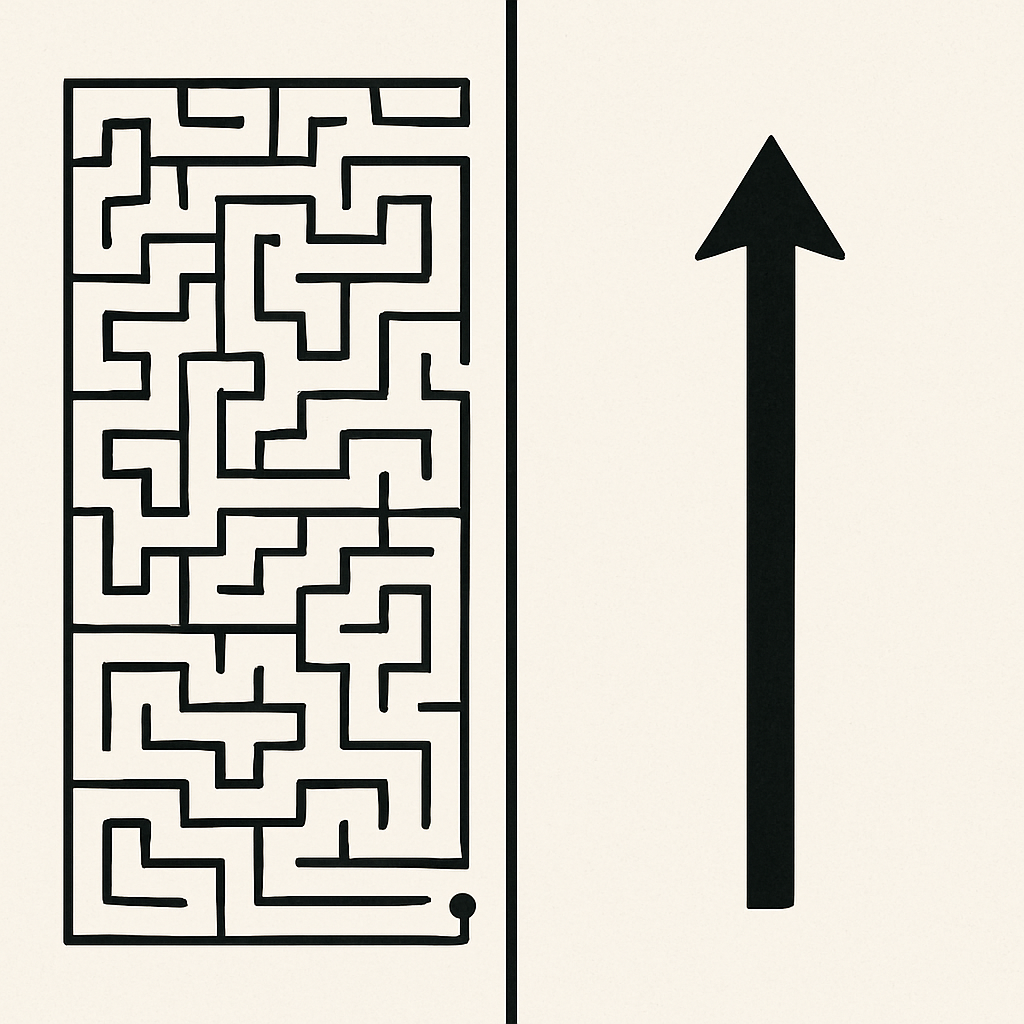
Why Complex Sales Systems Always Fail
Your sales process is probably too complicated.
I see this constantly when examining sales operations across construction and trades businesses. Companies layer on complexity thinking it demonstrates professionalism or thoroughness. The opposite happens.
Complexity kills conversion rates faster than bad pricing.
Every additional step, form, or decision point you add creates friction. Every piece of jargon or technical explanation gives prospects a reason to delay. Every complicated proposal structure makes it easier for them to say no.
The construction industry seems particularly vulnerable to this trap.
The Complexity Addiction
Business owners often mistake complexity for sophistication. They create elaborate sales funnels with multiple touchpoints, detailed technical specifications, and comprehensive proposal documents that require engineering degrees to understand.
This feels professional. It feels thorough.
But prospects experience it as overwhelming.
When someone contacts you about a heating system installation or building project, they want clarity. They want to understand what you're offering, how much it costs, and why they should choose you.
Simple questions deserve simple answers.
Instead, many businesses respond with multi-page proposals, complex pricing matrices, and technical explanations that confuse rather than clarify. They schedule multiple meetings when one would suffice. They create decision trees when a straight path would work better.
The customer journey becomes a maze instead of a highway.
What Simple Actually Means
Simple sales systems focus on removing friction, not removing substance.
You can maintain technical expertise while communicating clearly. You can be thorough without being complicated. You can demonstrate professionalism through clarity rather than complexity.
Simplicity means making it easy for prospects to say yes.
This starts with your initial response. When someone inquires about your services, they should immediately understand what you do, how you help, and what happens next. No confusion, no additional questions needed.
Your pricing should be transparent and easy to understand. Your proposals should highlight benefits in plain language. Your sales process should guide prospects naturally toward a decision.
The Hidden Costs of Complexity
Complex sales systems create multiple failure points.
Every additional step increases the chance someone will drop out. Every unclear explanation gives prospects a reason to seek alternatives. Every complicated process extends your sales cycle and reduces your conversion rates.
I've seen businesses increase their conversion rates by 5% or more simply by streamlining their customer journey. They removed unnecessary steps, clarified their messaging, and made it easier for prospects to move forward.
The math is straightforward. Fewer barriers equal more sales.
Complex systems also burden your team. Sales staff spend more time explaining processes instead of closing deals. Administrative overhead increases. Customer service issues multiply because prospects don't understand what they're buying.
Building Simple Systems That Work
Start by mapping your current customer journey from first contact to closed sale.
Identify every touchpoint, every form, every decision point. Look for steps that don't directly advance the sale. Question whether each element truly serves the customer or just makes you feel more professional.
Remove everything that doesn't help prospects say yes.
Simplify your language. Replace technical terms with clear descriptions. Turn features into benefits. Make your pricing transparent and easy to understand.
Streamline your proposal process. Focus on what matters most to the customer. Lead with outcomes, not processes. Show value clearly and quickly.
Create a single, clear path from inquiry to purchase. Eliminate alternative routes that confuse prospects. Make the next step obvious at every stage.
The Competitive Advantage
While your competitors add layers of complexity, you can win by being refreshingly simple.
Prospects will choose you because you're easier to understand and work with. Your sales cycle will be shorter. Your conversion rates will be higher. Your team will be more efficient.
Simple systems scale better than complex ones.
When you grow, you won't need to train new staff on complicated processes. You won't need elaborate documentation or extensive onboarding. Your systems will work consistently because they're designed for clarity.
This creates a sustainable competitive advantage. Complex systems become more unwieldy as they grow. Simple systems become more powerful.
Making the Change
Review your current sales process with fresh eyes.
Ask yourself: Would I want to navigate this process as a customer? Is every step necessary? Does each interaction move the sale forward?
Test your messaging with people outside your industry. If they can't quickly understand what you do and why it matters, simplify further.
Start with your first customer interaction. Make it immediately clear what you offer and what happens next. Build from there, adding only elements that directly serve the customer's decision-making process.
The goal is creating a customer journey so clear and compelling that prospects naturally move toward purchase. No confusion, no friction, no unnecessary complexity.
Your sales process should be like a well-designed tool. Effective, efficient, and easy to use.
Simple systems win because they respect the customer's time and intelligence. They make buying decisions easier instead of harder.
In a world full of complexity, simplicity becomes your strongest differentiator.